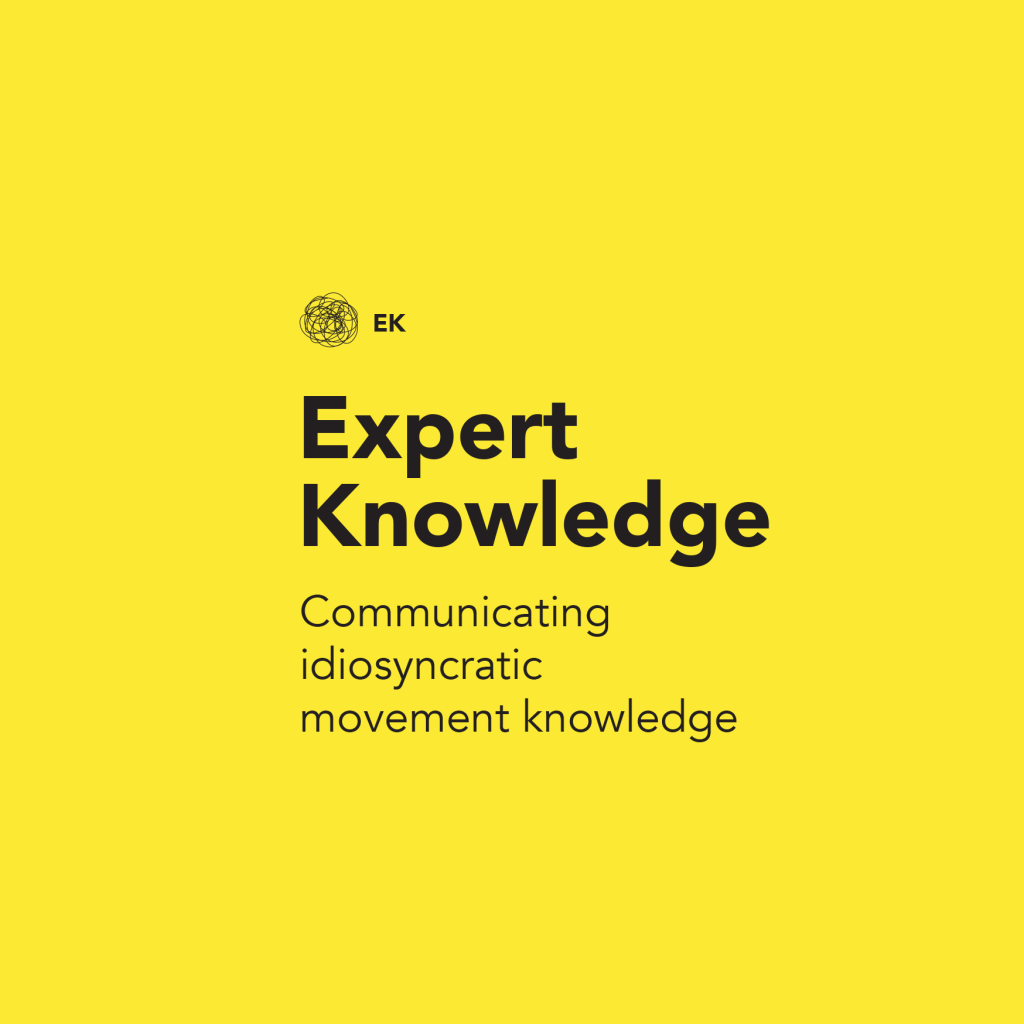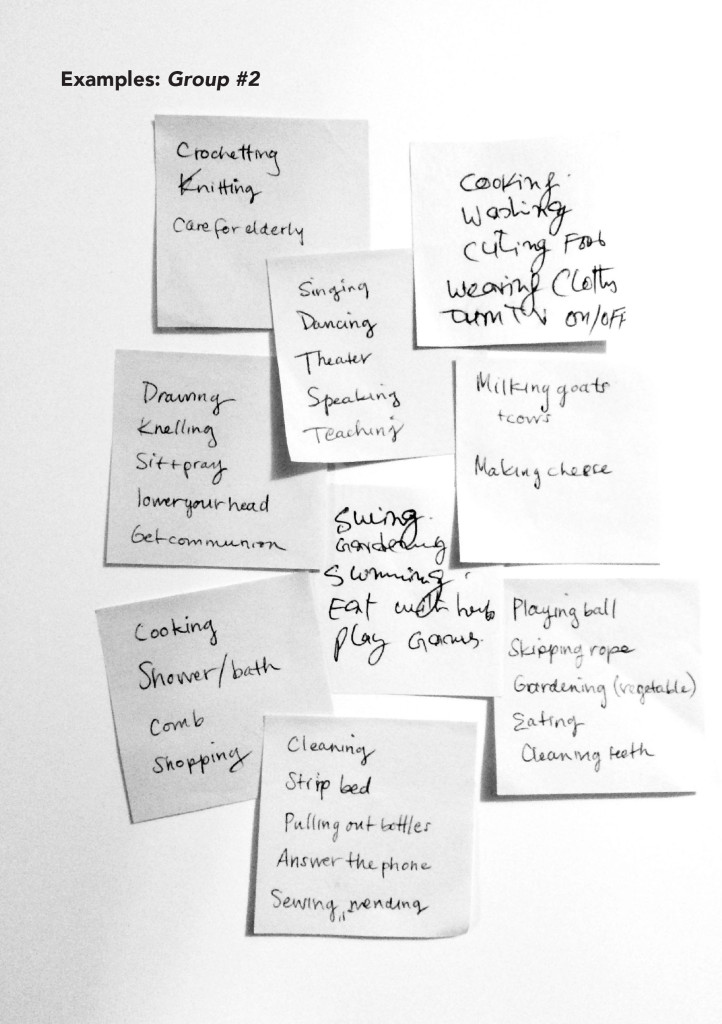
How
Invite participants to write down movements of which they are experts. The activity should be done as a group or in smaller groups. Encourage the group(s) to generate as many ideas as they can. Then, in the group, ask each person to communicate their knowledge. They can do so through a physical showing, a verbal telling, or any other medium.
Why
The art of knowing, according to Heidegger (1977: 13), is “to be entirely at home in something, to understand and be expert in it.” Expert Knowledge asks participants to explore ways of communicating movement knowledge. By allowing individuals to choose how they communicate knowledge, movement extends beyond the here-and-now and the physical showing. It asks the researcher to reconsider what it means to move and thus what it means to ‘show’ movement. In this sense, Expert Knowledge extends beyond the “meat” (Kozel, 2007) of the individual and into realms of complex, varied and affective social knowledge. This activity was inspired by the work of Suzy Willson of London-based Clod Ensemble.
Examples

Reflections
I used this activity solely with Group #1, during the second week. Because Group #1 started several weeks before Group #2, I was able to reflect on Group #1’s engagement and apply learnings to Group #2. This included iterating, re-sequencing, and creating new activities. Through this activity, participants highlighted the elements that generate unique choreographies, such as specific spaces (a hair salon in Wales) or objects (tickets, currency). Several times throughout the course of this activity, people commented on another person’s movement knowledge. For instance, one woman wrote “dress-making” as her expert knowledge. When it came time for her to communicate her knowledge to the group, several people in the group explained she was also a skilled hairdresser. This suggests a movement knowledge that is social and distributed, as well as one that extends beyond the visible and here- and-now. While this activity largely sought to explore how movement knowledge can be communicated, an unintended consequence of the activity (and of listening to participants) was one of choreographic content generation. At the end of this activity, one of the participants collected all the sticky notes, handed them to me and said, “Here, save these for next week. We will use them.” Initially I didn’t think of this activity as a content generating exercise, per se, but it became clear to me that the content discussed during this activity was important to the group, and thus important to the research. Reflecting on this activity lead me to create the Everyday Body Use activity, as well as reuse content generated in this workshop.
References
Heidegger, M., (1977), The Question Concerning Technology and Other Essays, New York: Harper & Row Publishers.
Kozel, S., (2007), Closer : Performance, Technologies, Phenomenology, Cambridge, Massachusetts: The MIT Press.